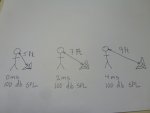(MOVED FROM Coaxial Wedge project thread)
As nice as it would be, I don't FIR processing is a reasonable target for this project. Despite having done plenty of reading regarding FIR and having played with things such as the BruteFIR convolution engine, ScopeFIR, etc, as Bennett has pointed out, being able to implement FIR is something completely different from being able to DESIGN FIR. The best I could do based on my own understanding and access to design resources would be simple brickwall filters.
I do have an interest in this and certainly think as FIR type processing starts becoming more mainstream, DIY is going to struggle to compete on a professional level without it. Look at some of the cheaper boxes coming out with FIR processing, some of them sound pretty darn good without relying on "premium" drivers. There is potential for more bang for the buck in a cab with this sort of DSP, particularly as DSP costs for this will lessen in the future.
A well explained and developed DIY process for such design work would be a significant game changer for DIY, though I don't expect to see this any time soon, as I would imagine the good folks like Dave Gunness and others aren't keen to gift the DIY community with such resources after having such significant business investments into it.
As nice as it would be, I don't FIR processing is a reasonable target for this project. Despite having done plenty of reading regarding FIR and having played with things such as the BruteFIR convolution engine, ScopeFIR, etc, as Bennett has pointed out, being able to implement FIR is something completely different from being able to DESIGN FIR. The best I could do based on my own understanding and access to design resources would be simple brickwall filters.
I do have an interest in this and certainly think as FIR type processing starts becoming more mainstream, DIY is going to struggle to compete on a professional level without it. Look at some of the cheaper boxes coming out with FIR processing, some of them sound pretty darn good without relying on "premium" drivers. There is potential for more bang for the buck in a cab with this sort of DSP, particularly as DSP costs for this will lessen in the future.
A well explained and developed DIY process for such design work would be a significant game changer for DIY, though I don't expect to see this any time soon, as I would imagine the good folks like Dave Gunness and others aren't keen to gift the DIY community with such resources after having such significant business investments into it.
Last edited:



